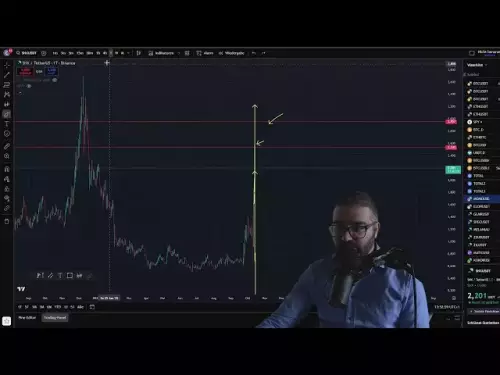-
 bitcoin
bitcoin $115692.075601 USD
5.13% -
 ethereum
ethereum $4162.931611 USD
11.68% -
 bnb
bnb $1310.063287 USD
17.56% -
 tether
tether $1.000983 USD
0.00% -
 xrp
xrp $2.534505 USD
8.16% -
 solana
solana $198.235737 USD
13.49% -
 usd-coin
usd-coin $1.000236 USD
0.02% -
 dogecoin
dogecoin $0.207352 USD
12.89% -
 tron
tron $0.323043 USD
3.62% -
 cardano
cardano $0.701559 USD
11.88% -
 hyperliquid
hyperliquid $39.924597 USD
8.30% -
 chainlink
chainlink $18.934457 USD
11.56% -
 ethena-usde
ethena-usde $1.000552 USD
0.02% -
 stellar
stellar $0.340575 USD
7.05% -
 bitcoin-cash
bitcoin-cash $545.011757 USD
8.86%
How do I view my Trezor device storage information?
Trezor devices securely store cryptocurrency keys in a protected chip, not for file storage, with data accessible via Trezor Suite for wallet management and transaction signing.
Oct 13, 2025 at 09:18 am
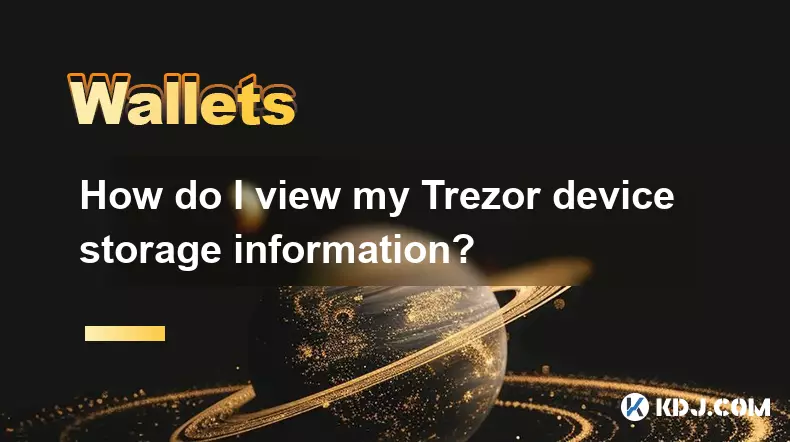
Understanding Trezor Device Capabilities
1. Trezor devices are hardware wallets designed primarily for securing cryptocurrency private keys, not for general file storage like traditional USB drives.
- These devices do not have user-accessible storage in the conventional sense; they store cryptographic keys and wallet configurations within a secure element.
- The firmware handles all data related to wallet access, including PINs, passphrases (if used), and account metadata, but this information is encrypted and isolated.
- Users cannot browse or manage files on a Trezor as they would on a typical storage device because it operates as a dedicated security module.
- Any interaction with stored data occurs through compatible wallet interfaces such as Trezor Suite, which communicates securely with the device via signed transactions.
Accessing Wallet Data Through Trezor Suite
1. To view information tied to your Trezor, connect the device to your computer using the provided USB cable and navigate to https://suite.trezor.io.
- Once connected, Trezor Suite displays wallet balances, transaction history, and supported cryptocurrencies based on the accounts you’ve added.
- The interface retrieves blockchain data from online servers, not directly from the device’s internal memory, meaning what you see reflects network records linked to your public addresses.
- You can review account labels, derivation paths, and recovery seed status directly within the app, giving insight into how your keys are organized.
- While the device itself doesn’t expose raw storage details, Trezor Suite offers transparency about active accounts and their associated data without compromising security.
Checking Firmware and Device Status
1. Within Trezor Suite, go to the 'Settings' section to find real-time device information such as model type, firmware version, and serial number.
- This area also shows whether your device is passphrase-protected, if a backup was created, and if safety checks like auto-lock timers are enabled.
- Firmware updates are delivered through this interface, ensuring that the underlying software managing key storage remains current and secure.
- A health check feature verifies that no unauthorized changes have been made to the device's configuration since setup.
- Although these features don’t reveal storage capacity or file listings, they confirm the integrity of the environment where your cryptographic assets are managed.
Frequently Asked Questions
Can I see how much memory my Trezor uses?No. Trezor does not provide metrics on memory usage. It stores only essential cryptographic data, optimized to fit within its secure chip. Users do not need to monitor memory consumption as it is handled automatically by the firmware.
Is there a way to export data stored on my Trezor?The private keys themselves cannot be exported due to security design. However, you can back up your wallet using the 12- or 24-word recovery seed during initial setup. This seed allows restoration on any compatible device but should never be digitized or shared.
Does connecting my Trezor to third-party wallets affect its internal data?Connecting to external platforms like MetaMask or Electrum does not alter the data stored on the Trezor. These integrations use the device for signing operations only, keeping private keys isolated while enabling broader functionality across decentralized applications.
Disclaimer:info@kdj.com
The information provided is not trading advice. kdj.com does not assume any responsibility for any investments made based on the information provided in this article. Cryptocurrencies are highly volatile and it is highly recommended that you invest with caution after thorough research!
If you believe that the content used on this website infringes your copyright, please contact us immediately (info@kdj.com) and we will delete it promptly.
- XRP Price Prediction: Weekend Rollercoaster or Rally?
- 2025-10-12 08:45:16
- Bittensor (TAO): Super Bullish Signals Point to Potential 2x Rally
- 2025-10-11 10:25:12
- Silver Price Correction: Navigating the Dip & Identifying Key SEO Keywords
- 2025-10-11 10:25:12
- Decoding Crypto Trends: Bittensor's Bull Run, Cardano's Dip, and LivLive's Presale Buzz in 'Uptober 2025'
- 2025-10-12 08:45:16
- MoonBull: The Crypto Meme Coin Promising 1000x Gains?
- 2025-10-11 10:30:01
- Crypto Payroll Revolution: Stablecoins, Altcoins, and the Future of Salary Payments
- 2025-10-11 10:30:01
Related knowledge
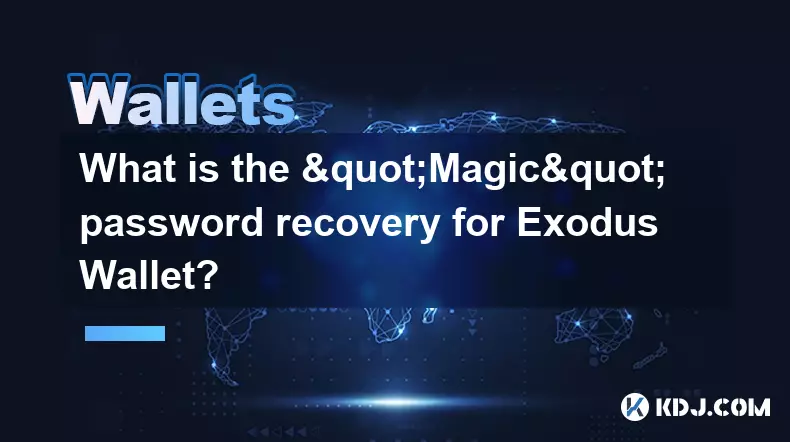
What is the "Magic" password recovery for Exodus Wallet?
Oct 13,2025 at 05:36pm
Magic Password Recovery in Exodus WalletExodus Wallet does not have a feature known as 'Magic' password recovery. The term might be misleading or misi...
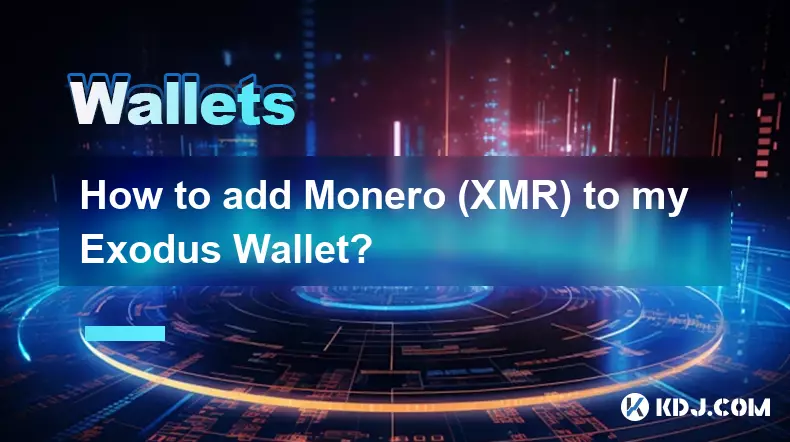
How to add Monero (XMR) to my Exodus Wallet?
Oct 10,2025 at 07:55am
Adding Monero (XMR) to Your Exodus WalletExodus Wallet supports Monero, one of the most privacy-focused cryptocurrencies available. Adding XMR to your...

How to change the theme or skin of my Exodus Wallet?
Oct 13,2025 at 05:18pm
Understanding Exodus Wallet CustomizationExodus Wallet is known for its user-friendly interface and vibrant design elements. One of the appealing feat...
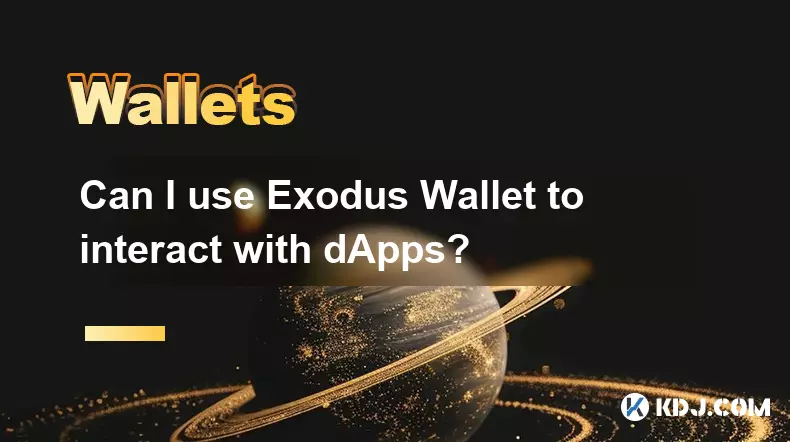
Can I use Exodus Wallet to interact with dApps?
Oct 10,2025 at 01:18pm
Exodus Wallet and dApp Integration1. Exodus Wallet has evolved into a multi-chain cryptocurrency wallet that supports a growing number of blockchains,...

How to find my Dogecoin (Doge) address in Exodus Wallet?
Oct 10,2025 at 09:01am
Finding Your Dogecoin Address in Exodus WalletExodus Wallet is a popular choice for storing various cryptocurrencies, including Dogecoin (DOGE). It of...
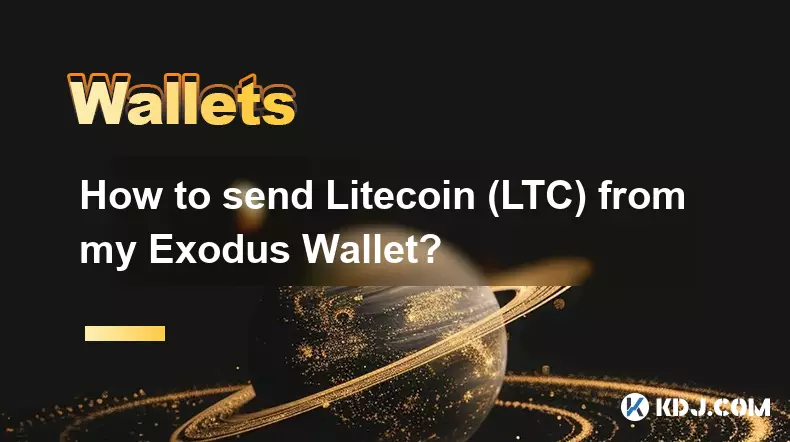
How to send Litecoin (LTC) from my Exodus Wallet?
Oct 13,2025 at 01:54am
Sending Litecoin from Exodus Wallet: A Step-by-Step Guide1. Open the Exodus Wallet application on your desktop or mobile device and unlock your wallet...

What is the "Magic" password recovery for Exodus Wallet?
Oct 13,2025 at 05:36pm
Magic Password Recovery in Exodus WalletExodus Wallet does not have a feature known as 'Magic' password recovery. The term might be misleading or misi...

How to add Monero (XMR) to my Exodus Wallet?
Oct 10,2025 at 07:55am
Adding Monero (XMR) to Your Exodus WalletExodus Wallet supports Monero, one of the most privacy-focused cryptocurrencies available. Adding XMR to your...

How to change the theme or skin of my Exodus Wallet?
Oct 13,2025 at 05:18pm
Understanding Exodus Wallet CustomizationExodus Wallet is known for its user-friendly interface and vibrant design elements. One of the appealing feat...

Can I use Exodus Wallet to interact with dApps?
Oct 10,2025 at 01:18pm
Exodus Wallet and dApp Integration1. Exodus Wallet has evolved into a multi-chain cryptocurrency wallet that supports a growing number of blockchains,...

How to find my Dogecoin (Doge) address in Exodus Wallet?
Oct 10,2025 at 09:01am
Finding Your Dogecoin Address in Exodus WalletExodus Wallet is a popular choice for storing various cryptocurrencies, including Dogecoin (DOGE). It of...

How to send Litecoin (LTC) from my Exodus Wallet?
Oct 13,2025 at 01:54am
Sending Litecoin from Exodus Wallet: A Step-by-Step Guide1. Open the Exodus Wallet application on your desktop or mobile device and unlock your wallet...
See all articles





















